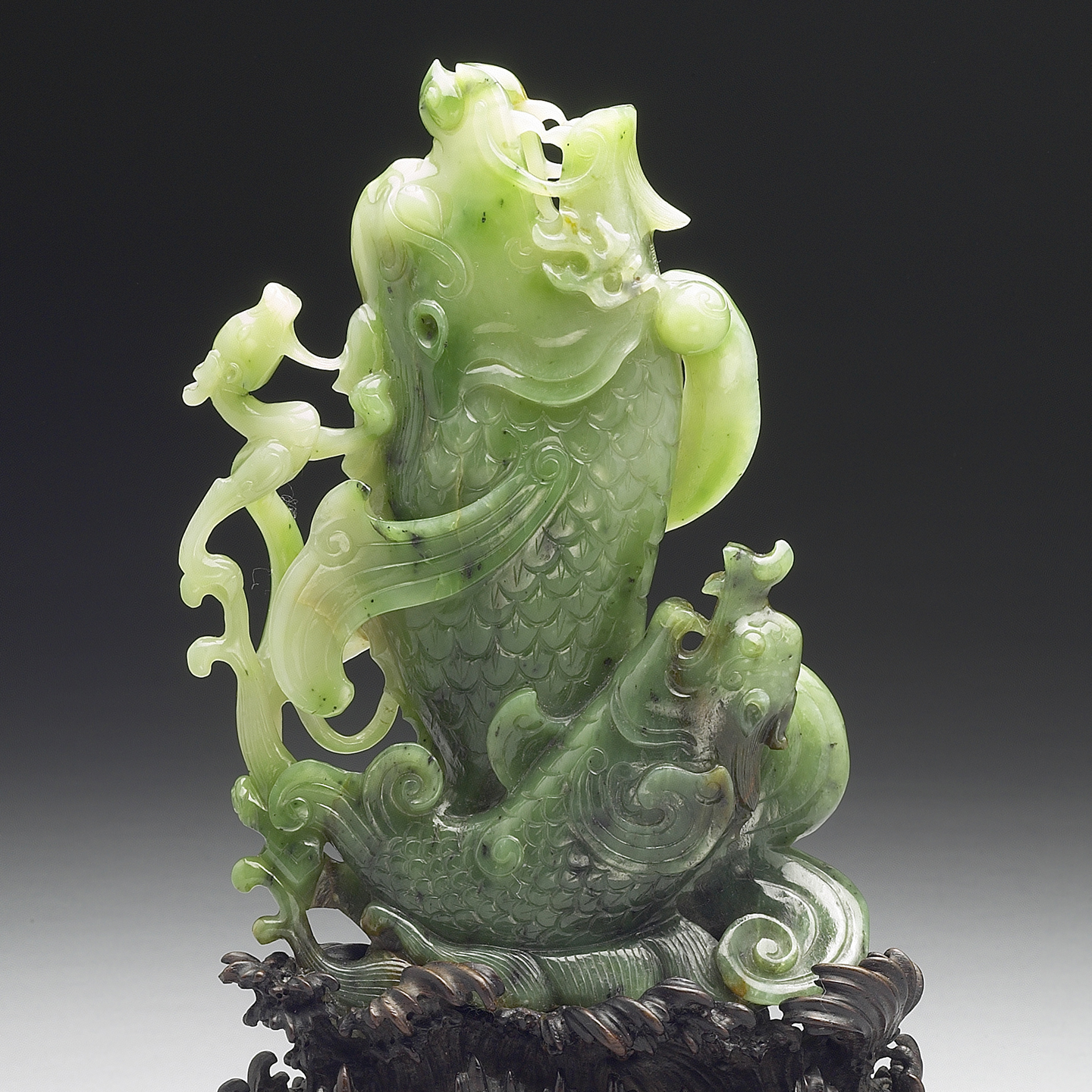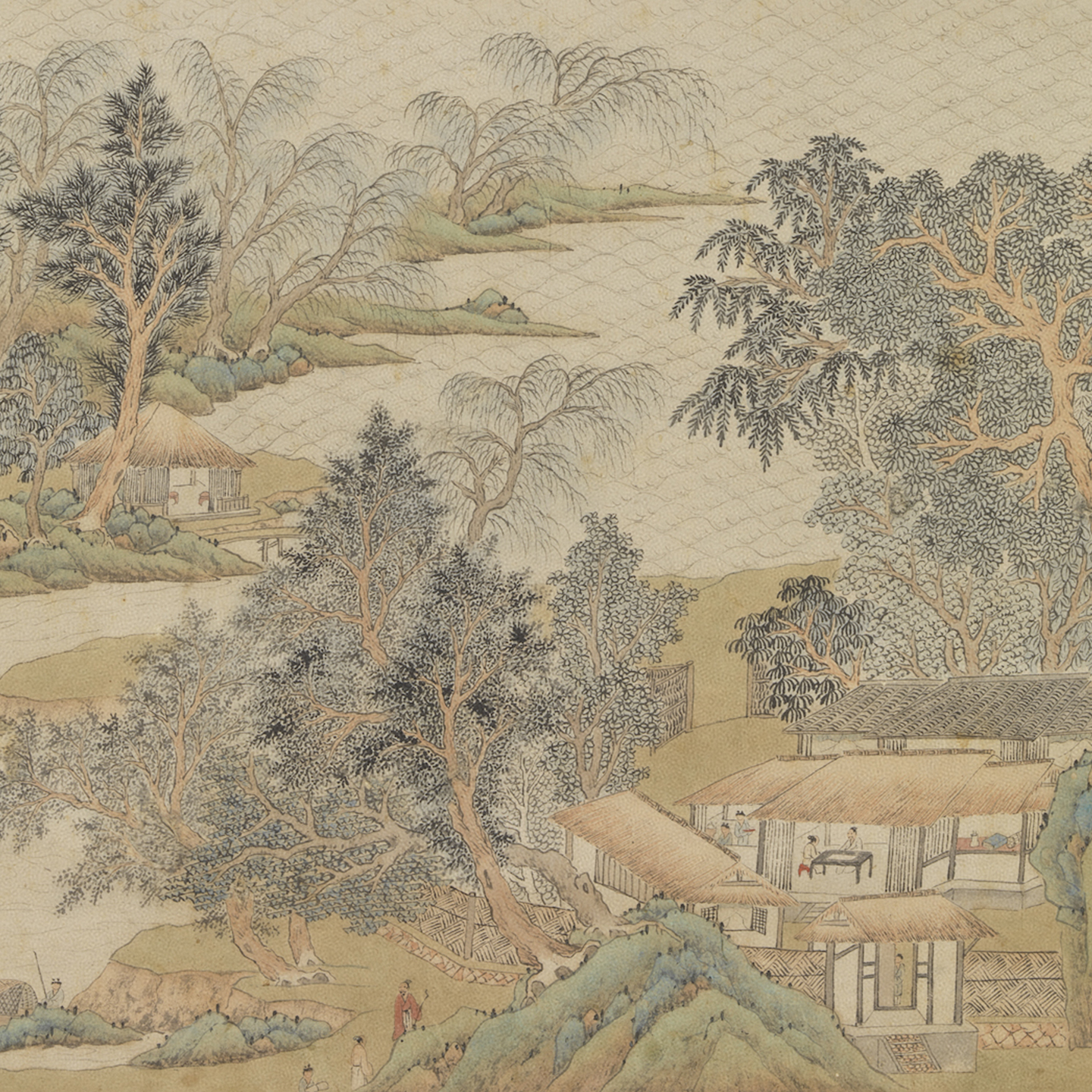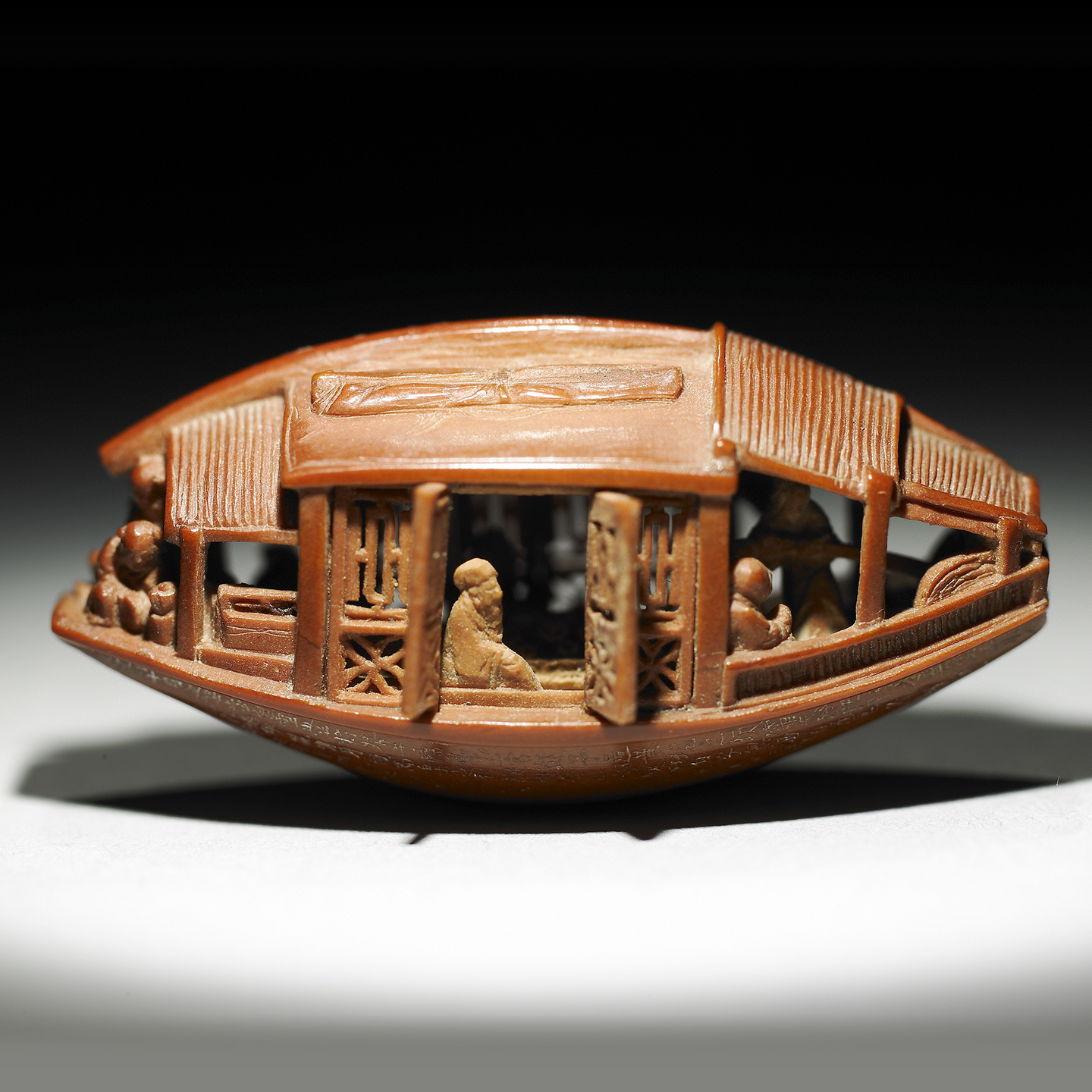Besides describing the scenery and seasons in nature, the ancient Chinese imbued many unfathomable aspects of the world with their rich and vivid imagination. Such spirit creatures as the dragon and phoenix that do not inhabit our natural world and mysterious realms of immortals and winged deities with heavenly grottoes and blessed sites all became subjects for representation in Chinese art. Spirit beasts are shown coiled or running in the decoration on antiquities, and isles of the immortals are frequently seen in painting. In the beginning, landscapes of the immortals were often depicted using mineral blues and greens, ultimately becoming fantastic and magical realms that formed a new chapter in the history of Chinese painting.
In the world of imagination, nature is not limited to what can be perceived by the senses but can be injected with subjective realms brimming with emotion. As such, the pine and bamboo became
"friends" of winter and symbols of a lofty scholar with integrity, the plum blossom and crane transformed into his
"wife" and "son." Objects in the form of an elephant with a vase on its back were associated as
"phenomena of peace," the word for "elephant" in Chinese a homonym for
"phenomenon" and "vase" for "peace." As a result, numerous aspects of nature took on metaphorical overtones and connotations. Take, for example, a site known as Red Cliff, where an epic and decisive battle was fought in Chinese history. It became the inspiration for two odes written by the literary great Su Shi, whose visits there gave flight to his imagination. Later generations would render this subject in painting, calligraphy, and other media superimposed with further additions and interpretations. Nature became not only an inextricable part of the human experience but also its consciousness.
Dark-green jade fish-dragon
flower holder
- Qianlong reign (1736-1795), Qing dynasty
- Height: 17 cm, width: 11.4 cm
"May you be blessed!" is a most important idea conveyed in the forms and decoration of many Chinese artifacts. Images with auspicious meaning are closely related to the desire among people to achieve happiness and fortune in life. As a result, not only have they been passed down for generations, their means of representation are also quite varied. One of them is to take the phenomena of nature and transform them into symbols conveying wishes for a better life.
Take, for example, this flower holder carved from dark green jade. The subject alludes to fish swimming up the Yellow River and having to pass a barrier known as Dragon Gate. The phenomenon of fish leaping furiously to go upstream came to serve as a metaphor for the scholar who studies hard and finally succeeds in the civil service examinations, the traditional path to high social status. Like an ordinary fish that manages to pass through Dragon Gate and is transformed into a mighty dragon, a humble scholar can become a refined gentleman. Here, at the bottom of the carving is a smaller fish that evidently has not succeeded and is being washed back downstream. The large fish, on the other hand, sprouts horns and has begun the change into a dragon.
Yuanjiao Study
- Wen Boren (1502-1575), Ming dynasty
- Hanging scroll, ink and colors on paper, 133.2 x 46 cm
Wen Boren (sobriquet Wufeng), a native of Suzhou in Jiangsu, was a nephew of Wen Zhengming (1470-1559), who very much influenced his art.
This painting probably reflects a trend since the fifteenth century for works on the sobriquet of the recipient, the artist using his imagination to create a scene based on a person's name. In this case, Yuanjiao, according to legend, was also a mountain of the immortals in the ocean, which is why the painting is combined with imagery of the immortals. Therefore, in the lower part of the scroll is the garden study where a host and guest are shown chatting, while in the upper part are isles of the immortals with majestic towers but not a soul in sight. The border of the painting is outlined in ink with an inscription to the side for the title and the artist's signature, an interesting detail that makes the painting similar to a book illustration. Paintings dealing with immortality in the past were often done in blue-and-green colors, this work being no exception. In addition, however, it is pure and elegant, making it similar to an actual scene in the Jiangnan region. An imaginative realm of the immortals has thus become a palpable place.
Carved olive pit in the form of a boat
- Chen Zuzhang (fl. 18th century), Qing dynasty
- Height: 1.6 cm, length: 3.4 cm, width: 1.4 cm
This piece is by Chen Zuzhang, a famous ivory carver in the imperial workshops during the early Qialong reign (1736-1795), and dated to the equivalent of 1737. Here, Chen has transformed a humble olive pit into a magnificently detailed miniature roofed boat in the round with woven bamboo awnings and doors that can be opened. On the boat are a total of eight boatman, attendant, and passenger figures. Engraved on the underside is the entire text for Su Shi's
"Latter Ode on the Red Cliff" in running script with Chen Zuzhang's signature. Su's masterpiece has been translated by the artisan into a tiny olive-pit boat with figures, the spatial arrangement and delicate details all evoking the imagery of this moonlit boat trip almost a millennium ago.
The rendering here is so captivating
that one could almost miniaturize
oneself, open the door, sit down next to
Su Shi by the window, and travel with
him to the Red Cliff. In the moonlight,
one can also imagine Su's famous lines:
"We take a skiff floating like a leaf.
It traverses the great vastness of the
universe."



